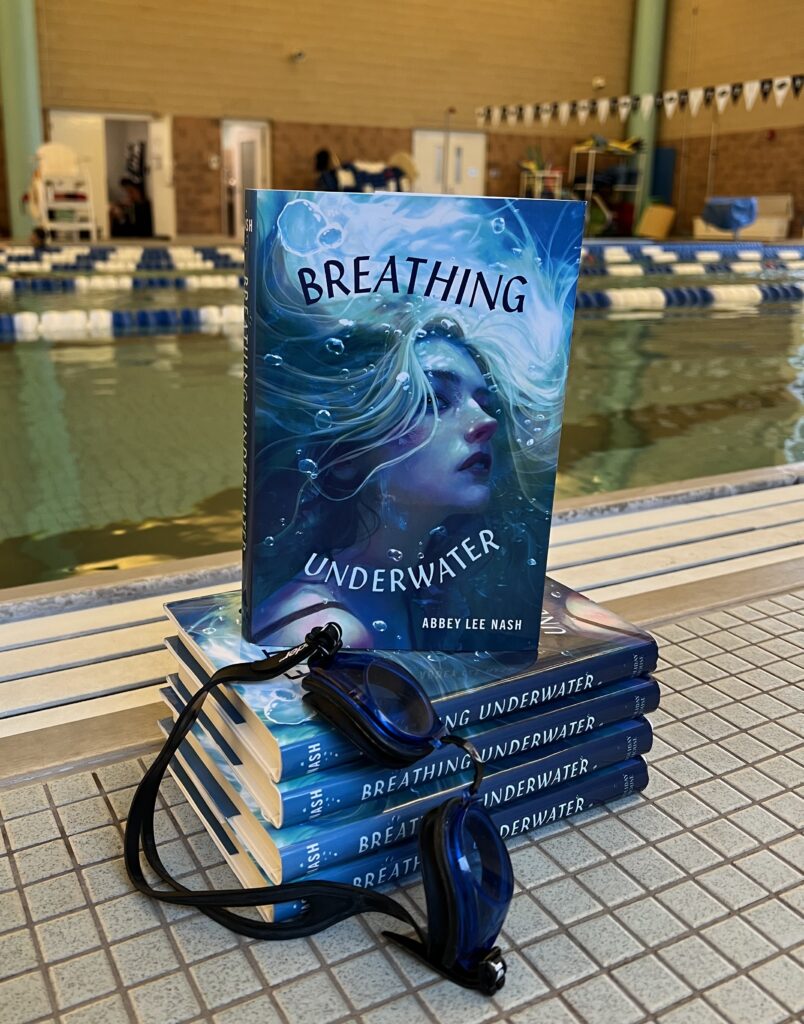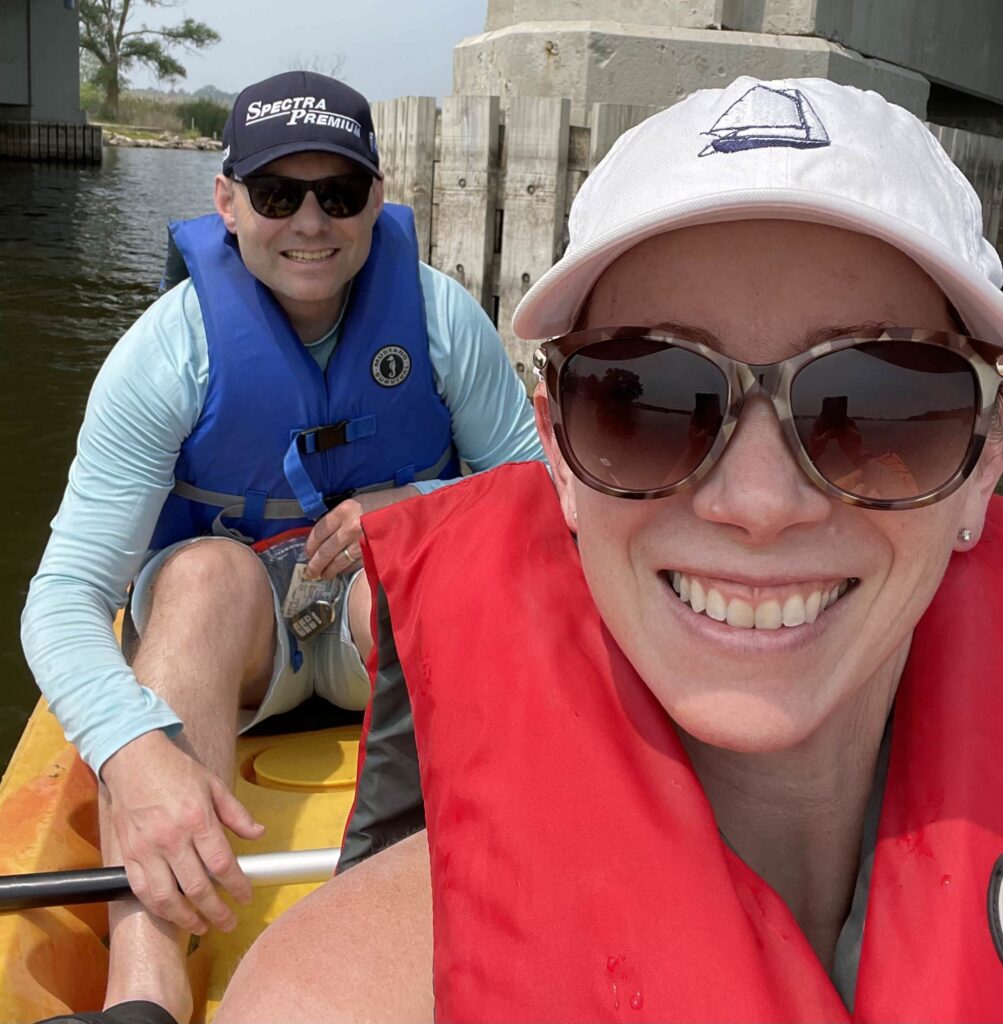
I vividly remember my first swimming experience. Unlike Tess, the main character in my YA novel BREATHING UNDERWATER, I didn't stubbornly slip out of my parents' arms and dive into a brave new world of cannonballs and underwater tea parties. In fact, I was so unenthusiastic in my swimming lessons that when it came to the class's crowning achievement: jumping off the diving board into the deep end, I flatly refused.
I can still manage dog rowing, but I hate diving boards. In high school, she dated several lifeguards (eventually marrying one) but could not save the pool noodle. So you can imagine my amusement when readers of BREATHING UNDERWATER share their own experiences with competitive swimming, as if that's something we certainly have in common.
Scroll to continue reading this post
In fact, despite the oft-repeated adage, “Write what you know,” I've written novels about the inner workings of drug and alcohol rehab facilities, music production, and the world of celebrities. We know very little about many things. At the most sordid level, “what we know” is often too weird or frankly too boring to be fiction.
But while I'm sure most science fiction and fantasy writers understand it even better than writers of modern fiction, “what we know” becomes the very seed of the story and the It reaches far below lived experience, to the common elements of society. Human nature: fear, love, sadness, lack. I don't know much about the main characters' premise experiences, but they include loving someone struggling with drug addiction, chasing a creative dream while dealing with painful hunger, and when life throws a curve ball. I know what it's like to hold on so hard. It threatens the very thing you love most.
In BREATHING UNDERWATER, 17-year-old Tess always had a plan. Her scholarship student and avid swimmer lives by her three rules: “Study hard, work hard, and train hard.” But all that changes in the summer before the national swimming championships. Tess has a seizure, her world suddenly changes, she has a doctor's appointment, she misses practice, and her summer job is spent behind the counter at a pool snack bar instead of sitting in a lifeguard chair like she used to do in summers. The world has become stuck. Instead, her job is given to newcomer Charlie. His messy hair and laid-back demeanor make Tess' heart skip a beat, but now is not the time. She is in danger of losing her spot on the swim team, and with it, her best chance to get into the college of her dreams. But with the support of her loving family, her best friends, her epilepsy support group, and perhaps her sweet new baby boy himself, Tess slowly begins to envision a new future for herself, one based on self-acceptance and inclusion.

When I started writing BREATHING UNDERWATER, I had recently suffered a series of seizures and was taking drugs that numbed my brain. I could no longer drive, and even things like sleeping or taking a leisurely bubble bath suddenly became dangerous activities that I couldn't do without supervision. My life as I knew it was completely turned upside down. I felt hurt and angry. And her grandmother encouraged her to write about it.
I had already written a novel called LIFELINE, and the process became my own lifeline while I was working through a loved one's addiction. For me, writing is a life-saving activity. These feelings are reflected in Tess's relationship with swimming. When she considers rejoining the swim team, despite the dangers of the water, Tess says: “All you need is the smell of chlorine and a buzzing mind.'' Similarly, I was unsure of my decision to write a book inspired by my experience with epilepsy. I had no idea what the future held for my health or where the U-turn in my life would ultimately take me. The only thing I knew for sure was that writing would bring me back to myself.
I didn't need to know about underwater training, pace lanes, or finishing times to write Tess's story. I learned these things from competitive swimmers who are so passionate about their sport and willing to share the many resources I've gained through it. You can mine elements outside of the book to bring it to life. Thanks to Google, we can become experts in almost any field. I have also been fortunate to connect with many other people with epilepsy through my local chapter of the Epilepsy Foundation, including many teenagers whose experiences are different from mine. But the heart of BREATHING UNDERWATER, Tess's inner arc, is something I already knew: fear, heartache, and ultimately a determination to show up anyway.
“Sometimes life throws you a curve ball, and winning becomes less important than being able to catch it,” says Tess' father. Not every “curve ball” looks like a health issue, chronic illness, or injury. Sometimes they look like the end of a relationship, unmet goals, or uncertainty about the future. I hope BREATHING UNDERWATER resonates with all readers who are looking for a way back to themselves, no matter what life throws at them. My travels have taught me that roads expand as you walk, and that sometimes broken roads can lead to beautiful places.

Tess says: “…a whole future unfolds before me, full of new and different things, but not necessarily bad ones. Like wildflowers in a vegetable garden, they surprise you with unexpected beauty. .”
“Write what you know” is a great starting point for writers. But I would add to that advice: “Write what you wish you hadn't written.” Bravely dig into your own lived experiences to discover how they shaped you and unearth the threads of humanity that connect you to your readers. Let those dark, broken, and beautiful places be the cracks that illuminate your story.
For everything else, there's Google.
meet the author

Scroll to continue reading this post
Abby Lee Nash holds a master's degree in English from Arcadia University. She lives in the Philadelphia suburbs with her husband and her two daughters, and she works as a senior marketing writer in the medical industry. A former writing teacher, she enjoys leading creative writing workshops, and she also speaks at SCBWI events, the National Council of Teachers of English, and schools and universities. When she's not writing or talking about writing, you can find her reading books, spending time with her family and friends, or taking walks in the woods. Masu. BREATHING UNDERWATER is her second novel. For more information about her work, please visit www.abbeynash.com.
about breathing underwater
In this sensitively written slice-of-life novel, a teenage girl grapples with a sudden diagnosis of epilepsy while exploring a new love and an uncertain future.
Tess loves swimming. In the water, she is truly alive. Between her tough grades, her insecure parents, and her newly estranged best friend, she's holding her breath for the rest of her life.
Until tragedy struck. Suddenly, Tess's health and future are filled with uncertainty. Her summer before her senior year has now been spent attending doctor's appointments, missing swim practice, and her job is stuck behind the counter, not as a lifeguard like previous summers. Don't sit too high on the chair. Instead, her spot goes to newcomer Charlie. His messy hair and laid-back demeanor caught Tess's attention, but now was not the time. She is in danger of losing her hard-earned college swimming scholarship. She has to focus on getting back in the pool and finding her sense of self again.

Lyrically and delicately written, breathing underwater The film is a deep slice-of-life story that explores topics such as epilepsy, inclusivity in the student movement, changing friendships, and the power of love and community. With warmth and wit, Abbey Lee Nash has crafted a moving portrait of a teenage girl's journey to self-acceptance and being her own person.
Junior Library Guild Gold Standard Selection
ISBN-13: 9780823453863
Publisher: Holiday House
Publication date: 2024/03/05
Target age: 14 – 17 years old
File: Guest Post

